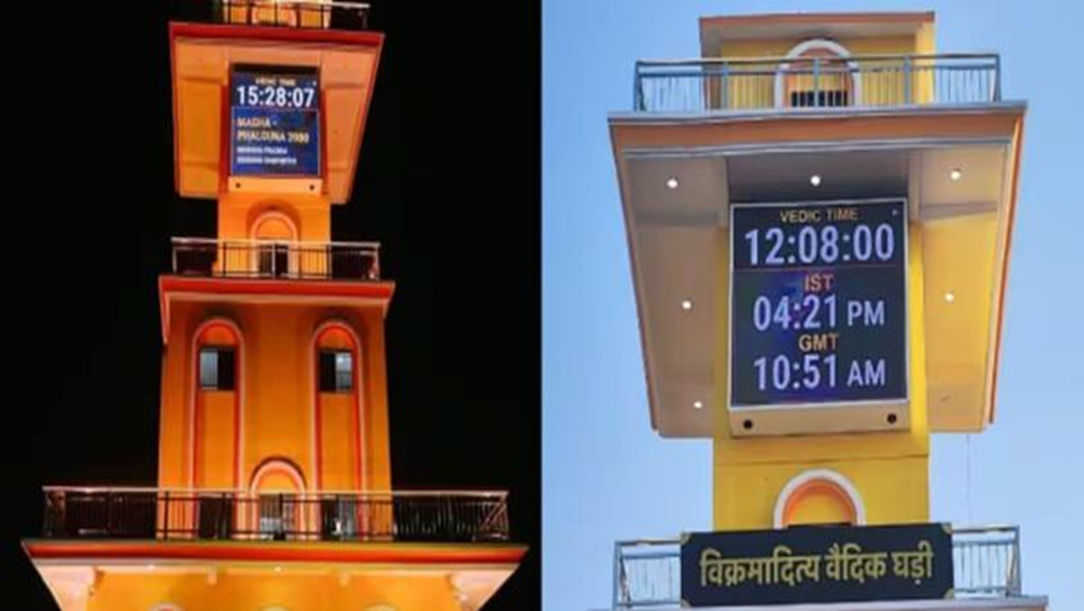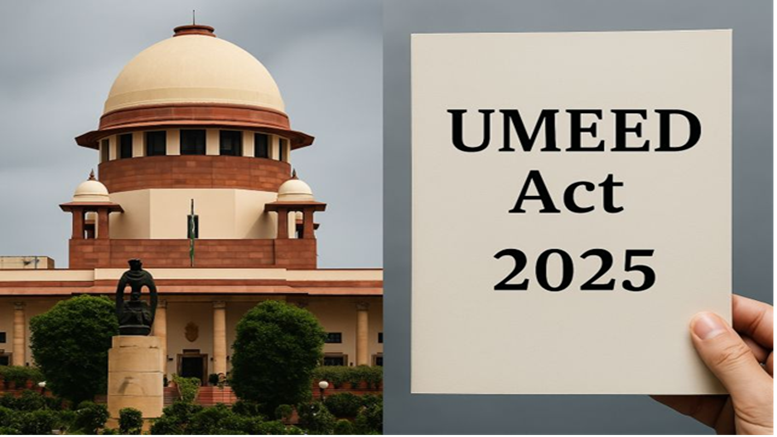- Courses
- GS Full Course 1 Year
- GS Full Course 2 Year
- GS Full Course 3 Year
- GS Full Course Till Selection
- Online Program
- GS Recorded Course
- NCERT (Recorded 500+ Hours)
- Polity Recorded Course
- Geography Recorded Course
- Economy Recorded Course
- AMAC Recorded Course
- Modern India, Post Independence & World History
- Environment Recoded Course
- Governance Recoded Course
- Science & Tech. Recoded Course
- International Relations and Internal Security Recorded Course
- Disaster Management Module Course
- Ethics Recoded Course
- Essay Recoded Course
- Current Affairs Recoded Course
- CSAT
- 5 LAYERED ARJUNA Mentorship
- Public Administration Optional
- ABOUT US
- OUR TOPPERS
- TEST SERIES
- FREE STUDY MATERIAL
- VIDEOS
- CONTACT US
VIKRAMADITYA VEDIC CLOCK: WORLD'S 1ST VEDIC CLOCK
VIKRAMADITYA VEDIC CLOCK: WORLD'S 1ST VEDIC CLOCK

On February 29, Prime Minister Narendra Modi virtually inaugurated the Vikramaditya Vedic Clock in Ujjain, Madhya Pradesh. This clock is installed on an 85 feet high tower near the Government Jiwaji Observatory inside Jantar Mantar in Ujjain.
Details:
- Indian 'Panchang' Based Timepiece: The clock uses the Indian 'Panchang' (almanac) as its foundation, providing a unique timekeeping system.
- Functionality: It provides data on planetary positions, muhurat (auspicious time), astrological calculations along with indicator Indian Standard Time (IST) and Greenwich Mean Time (GMT).
Historical Significance of Ujjain:
- Time Calculation Hub: Ujjain is a city with a significant history in time calculation. 300 years ago, it determined the standard time of the world and is known as a hub for timekeeping. The Tropic of Cancer also passes through the city.
Features of the Vedic Clock:
- Comprehensive Data: Beyond time, the clock provides information like moon position, parva (festival), shubh muhurat (auspicious time), ghati (a unit of time), nakshatra (lunar mansion), and more.
- Aim: This clock attempts to revive the traditional Indian method of time calculation based on astronomical principles.
Operational Mechanism:
- Time Calculation: It calculates the time from one sunrise to the next, dividing the period into 30 parts, where each hour consists of 48 minutes as per ISD (Indian Standard Duration).
- Duration: The clock operates for 30 hours, starting at 0:00 with sunrise.
|
Feature |
Vikramaditya |
IST |
|
Time Calculation |
Sunrise to sunrise, divided into 30 parts |
24-hour clock based on mean solar time at the Royal Observatory in Greenwich, England |
|
Duration |
30 hours, starting at 0:00 with sunrise |
24 hours, starting at 00:00 UTC |
|
Hour Length |
48 minutes |
60 minutes |
Greenwich Mean Time (GMT):
- Definition: GMT denotes the mean solar time at the Royal Observatory in Greenwich, London, serving as the global timekeeping benchmark.
- Origin: Established in the 19th century, the Royal Observatory was assigned as the prime meridian (0° longitude), dividing the Earth into Eastern and Western Hemispheres.
- Usage: GMT is widely used in aviation, maritime navigation, and international telecommunications to standardize time coordination globally.
- Conversion: It is converted to local time by adjusting hours according to the respective time zone relative to Greenwich.
There are 5 Jantar Mantar in India: Maharaja Jai Singh II of Jaipur built the 5 Jantar Mantar between 1724 and 1735. They are astronomical observatories that use stone structures to help calculate time and interpret the position of celestial bodies. The Jantar Mantar is an expression of the astronomical skills and cosmological concepts of the court of a scholarly prince at the end of the Mughal period.
|
Conclusion:
Vikramaditya Vedic Clock is a blend of tradition and technology, symbolizing the cultural heritage and scientific prowess of India. Its unveiling is an important step towards reviving ancient timekeeping methods in the contemporary era.

![img-PSYCHOLOGICAL WARFARE [PSYWAR]](https://i.filecdn.in/755esias/PSYCHOLOGICALWARFAREPSYWAR-1747206772505.jpg)

